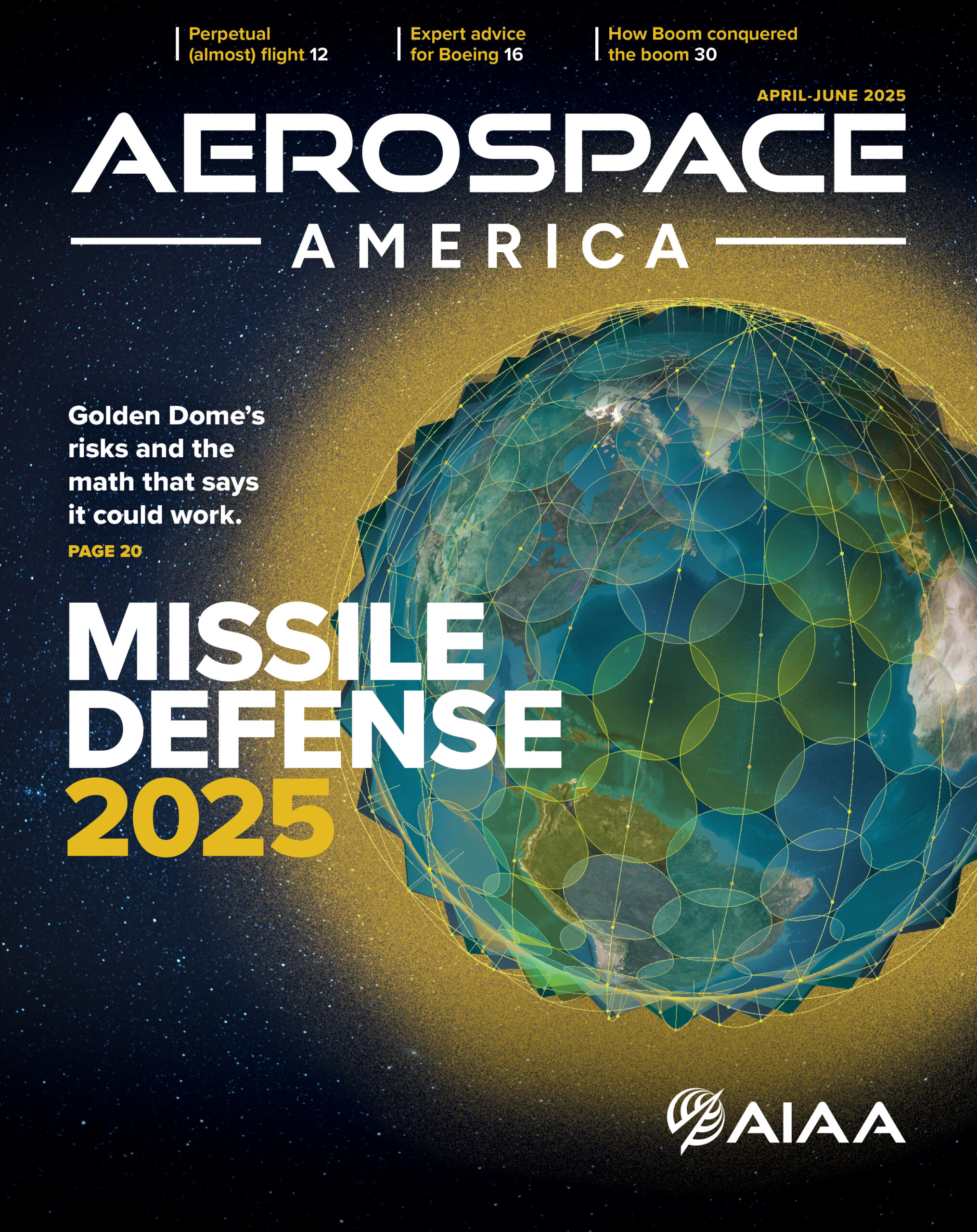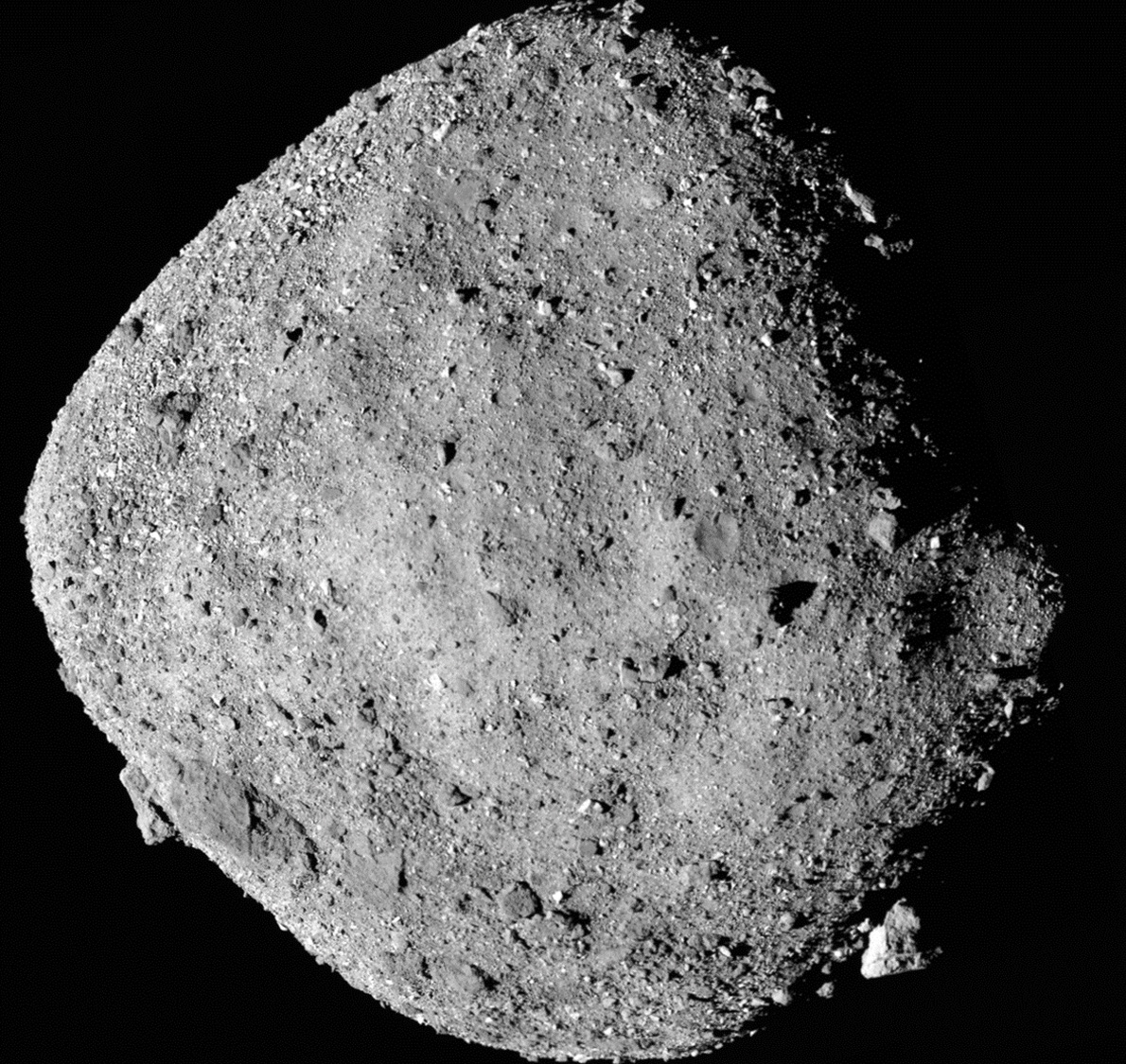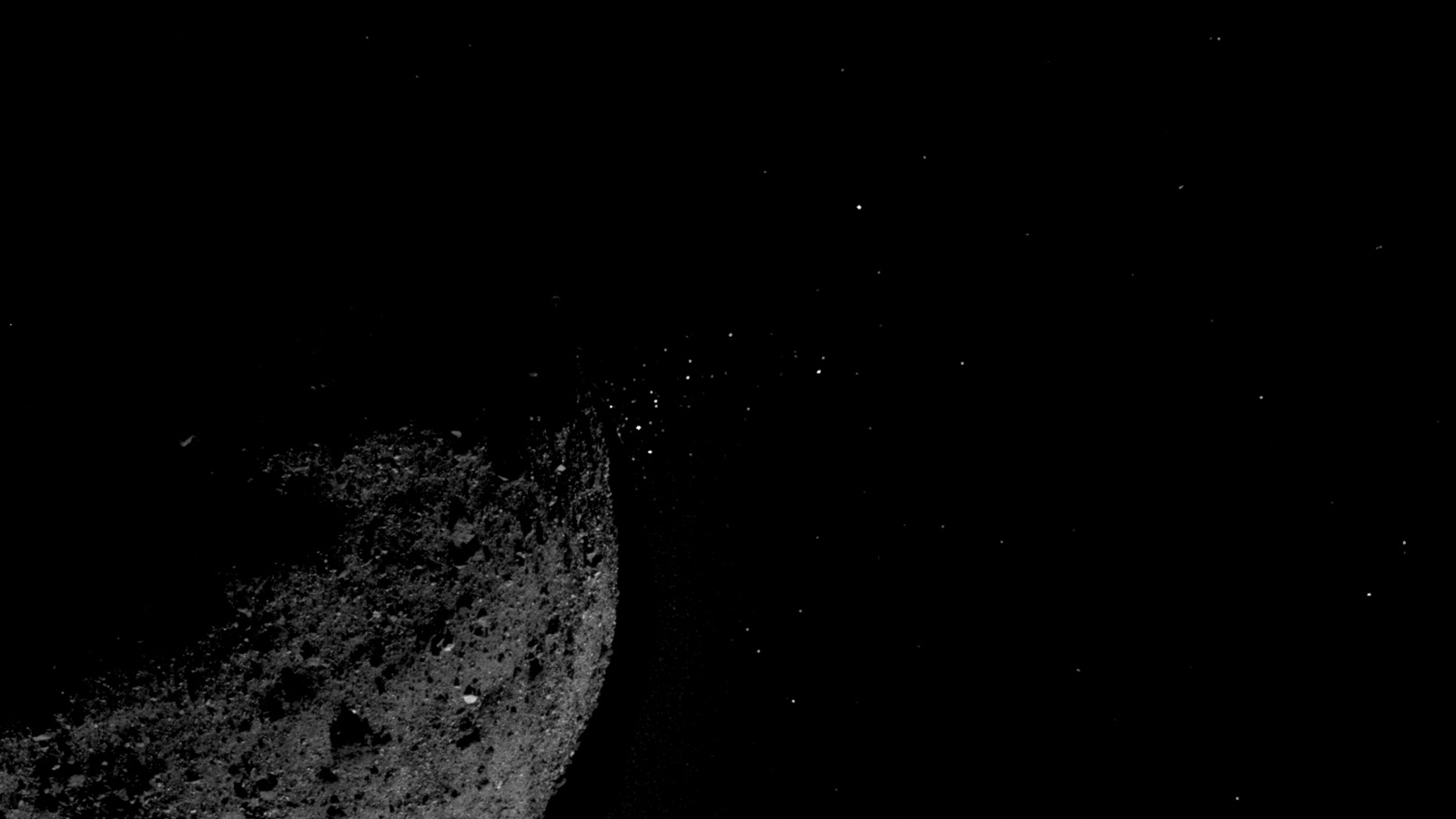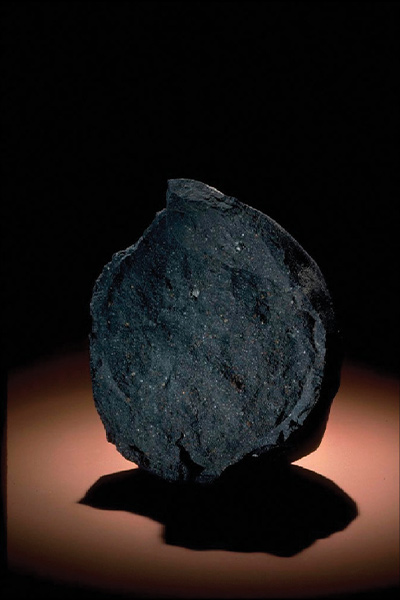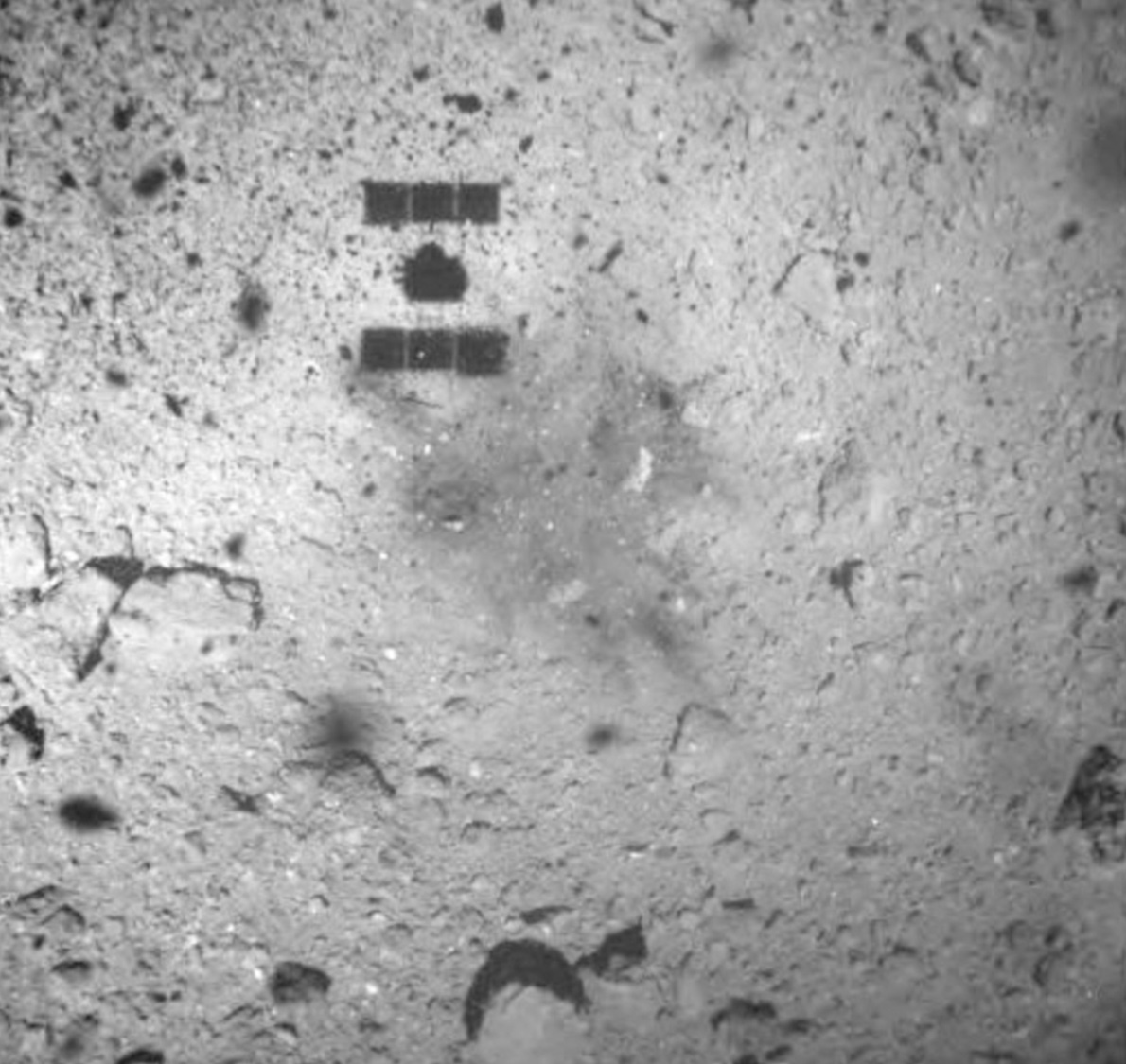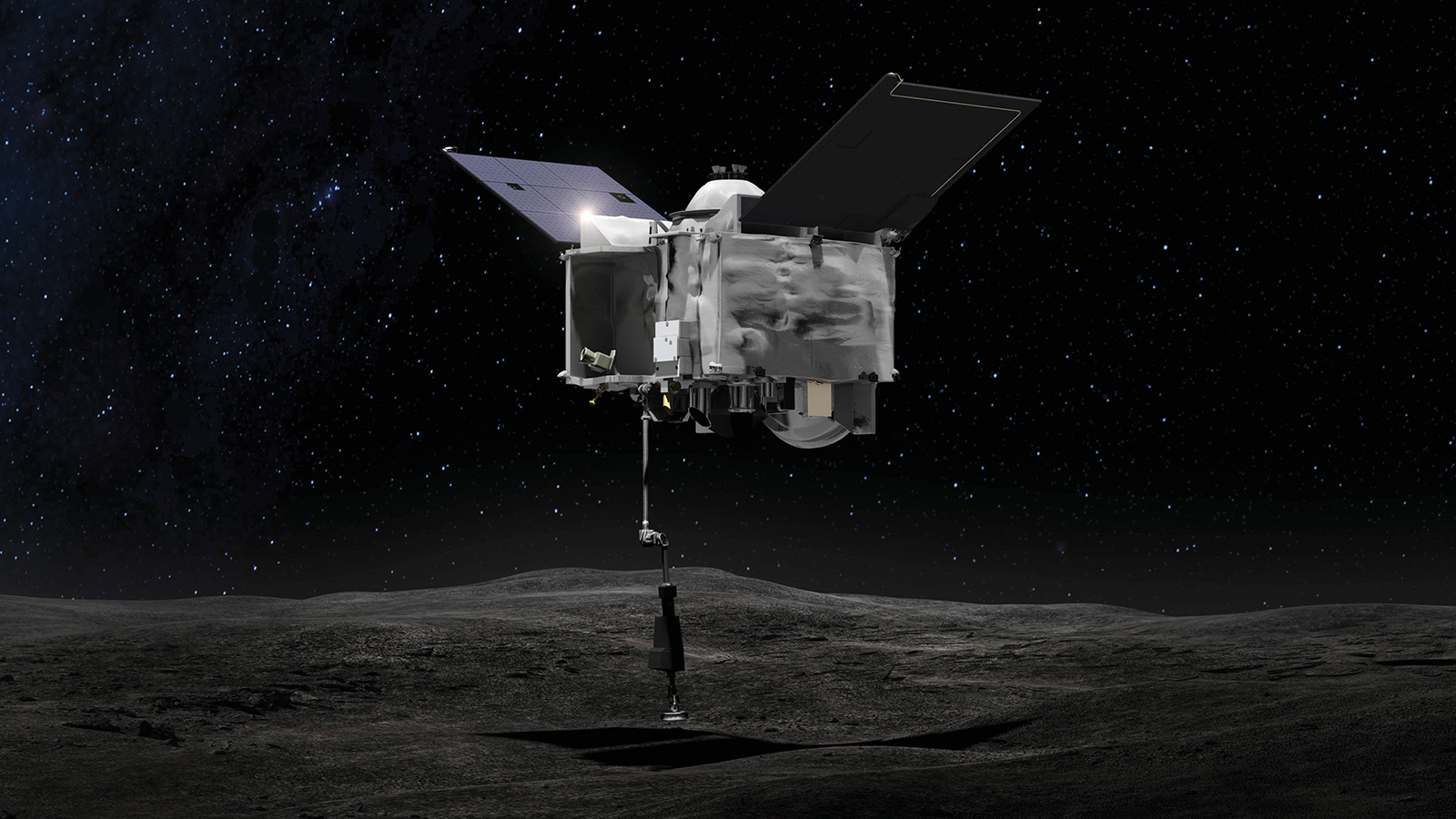Stay Up to Date
Submit your email address to receive the latest industry and Aerospace America news.
Beyond the moon, sending astronaut explorers to near Earth asteroids in the 2030s would open intriguing, resource-rich objects to in-depth inspection and exploitation, smoothing the daunting path to Mars. Former astronaut Tom Jones makes the case.
So, America is going to the moon in five years, to the threshold of deep space. Administration plans call for a landing near the lunar south pole by 2024, with an outpost to follow. NASA’s lunar return is to build the experience and skills needed to reach Mars sometime in the 2030s.
Mars is a tall order: more than six months in deep space each way, long exposure to radiation and other human health hazards, and the still-unsolved problem of landing people and cargo there. One of the biggest technical challenges NASA and its partners face is building a spacecraft reliable enough to support astronauts during a two- to three-year voyage, beyond resupply and physical assistance from Earth. Mars flight will pit our best technology against the unpredictable hazards of interplanetary travel, a true leap into the unknown.
Achieving Mars readiness
Our machinery and skills, even after a return to the moon, will not be sufficiently mature for multiyear Mars expeditions. One idea for proving the readiness of a Mars cruise vehicle is to put a crew aboard and have them orbit the moon for a year. Such a mission would present few Mars-relevant operational tasks and deliver almost no new science return. Yawn. “Houston, this is Infinity 1. Please shoot me now.”
The right way to test our Mars readiness is to launch explorers on a daring yet measured step into deep space, to a nearby asteroid. New discoveries at near Earth asteroids show these ancient objects are worthy targets for astronauts and their craft. An NEA mission would toughen us for Mars voyages by wringing out nearly every system of a Mars cruiser in deep space. Such an expedition would gather a shipload of scientific discoveries, assess asteroid resources and give us the exploration experience we’ll need to light out for Mars.
NEA missions, for example, allow us to test the reliability of life support systems, countermeasures against radiation and free-fall debilitation, deep-space communications, and radiation-hardened computers. On a crewed NEA expedition lasting up to a year, we’ll get those reliability answers, while putting human explorers in direct contact with these ancient, resource-rich objects.
Mars-relevant challenges
Near Earth asteroids are not easy to visit. A crew would depart the Earth-moon system into orbit around the sun, rendezvous with an NEA in its heliocentric orbit, conduct a couple of weeks of intense exploration, then return to Earth. Of the roughly 20,000 known NEAs, only a fraction offer round-trip mission durations of less than a year. But that’s exactly the point — the trip times are longer than International Space Station expeditions and lunar sorties but far shorter (and less hazardous) than multiyear trips to Mars.
We know much more about the challenges of operating around and on asteroids thanks to recent results from two robot spacecraft now visiting a pair of different, subkilometer-sized asteroids. Japan’s Hayabusa 2 is at 162173 Ryugu, and the U.S. probe OSIRIS-REx arrived at 101955 Bennu in late 2018. Both objects are rubble piles: impact-shattered pebbles, rocks and boulders held loosely together by the object’s very weak gravity (10 micro-Gs at Bennu’s surface).
The weak, irregular gravity fields of these top-shaped objects make orbiting them difficult: gravitational variations will perturb a craft into an eventual collision with the asteroid. Rather than executing a stream of fuel-intensive maneuvers to compensate, trajectory planners for a human mission might choose to fly in loose formation in near-parallel heliocentric orbit, as demonstrated by OSIRIS-REx.
Ryugu and Bennu are rougher than expected: no smooth, dusty plains but instead jumbled rock fields ranging in size from pebbles to office-building-size boulders. Several massive Bennu boulders are perched on crater rims or on slopes and may be composed of crumbly, low-strength clays. The rapid spin and Bennu’s low gravity mean that those rocks are tenuously bound, especially around the equator. If a spacecraft or suited astronaut tips one from its delicate balance, they may trigger a slow-moving but still-dangerous avalanche.
The OSIRIS-REx team had hoped to find a smooth, 25-meter touchdown zone for next year’s sample collection attempts, but such obstacle-free spots on Bennu are nonexistent. The team is now refining the probe’s navigation and sensor software to hit a landing ellipse just 10 meters across.
Assuming a suitable touchdown target can be found, anchoring a spacecraft on such a rubble pile will require some clever harpoon or auger engineering. In February, when Hayabusa-2 touched down momentarily on Ryugu to collect a sample, the projectile fired to liberate surface material launched a blizzard of asteroid shards that tumbled chaotically alongside the rising craft. Imagine trying to anchor a multiton crewed craft amid a shower of debris, hoping to find purchase on an unstable surface. It’s a design challenge that we’ll face again on the martian moons, Phobos and Deimos.
OSIRIS-REx has detected small particles leaving the surface — an asteroid shower — perhaps liberated by thermal fracturing or flash evaporation of water in hydrated minerals. Some of this debris rains back onto the surface, while some escapes entirely. However, these slow-moving particles pose little hazard to spacecraft.
Now the good news
NEAs harbor a wealth of scientific rewards and valuable resources. Bennu and Ryugu, for example, are weird but fascinating places. They pose enough mysteries and puzzles to challenge a crew of deep space explorers for weeks.
Current NEA accessibility tables list nearly two dozen NEAs that will be reachable from Earth between 2030 and 2035. They offer round-trip mission durations of less than a year and stay times of at least eight days and require a total velocity change from low Earth orbit of less than 6 kilometers a second — about the same as a one-way trip to the moon’s surface. Many initial NEA targets will be discovered by powerful new search telescopes by the time NASA and partners prepare to shift aim from the moon to Mars.
NEAs represent a windfall of scientific discovery as we reach for Mars. Objects like Bennu and Ryugu likely contain materials that date to the very formation of the solar system. Mineralogical analysis of such asteroids, thought to resemble carbonaceous chondrite meteorites, will tell us in detail about the raw materials and thermal conditions that gave rise to the terrestrial planets like Earth. These primordial asteroids likely delivered water and complex organic compounds to our young planet, perhaps kick-starting the complex chemistry that gave rise to life.
OSIRIS-REx has discovered water-bearing clay minerals across Bennu’s rocky surface. Can we invent a way to liberate that water and distill it for practical use? If the answer is yes, then this near Earth water can be transferred to tanks and launched from low-gravity NEAs. It may even compete economically with lunar water that must be launched from a substantial gravity well. Asteroidal water could be the propellant in a simple steam rocket, or if separated into hydrogen and oxygen, could fuel high-thrust chemical — and even nuclear —rocket engines.
Asteroid exploration promises to test a variety of Mars-relevant exploration technologies. Astronauts can wring out the kinks in exploration-class spacesuits in the gritty, low-G asteroid environment, one they will surely encounter again on the Martian moons. Alternatively, astronauts can work inside small, personal spacecraft with manipulators and anchoring systems to avoid bringing their cruise vehicle down to a hazardous, uneven surface.
In another promising exploration strategy, these same small spacecraft could be teleoperated from the cruise vehicle to explore the asteroid surface. Their strange surfaces, hazardous to space-suited astronauts, are attractive candidates for near-real-time telepresence. Astronaut-directed, low-latency telepresence could move from early trials at the lunar gateway and surface, to asteroid expeditions, to the moons of Mars, and finally to its surface.
Finally, a 2030s NEA expedition is the perfect scenario for proving the deep-space reliability and performance of a nuclear thermal propulsion system. Tested initially around the moon, a nuclear thermal engine could shorten trip times to an asteroid and reduce the expedition’s propellant requirements. If NASA is serious about getting humans to Mars, nuclear propulsion must be part of the picture.
A road map to Mars
The startling results from robotic explorers Hayabusa 2 and OSIRIS-REx have surprised asteroid scientists and spacecraft designers alike. They are peeling back the veil of ignorance cloaking the solar system’s early history. Following robotic reconnaissance, crewed NEA expeditions offer logical, well-timed steps toward human Mars exploration. Dispatching a prototype Mars cruiser first to an NEA or two would test critical deep-space systems and open intriguing, small worlds to sophisticated science. These expeditions would help NASA build a strong, reduced-risk bridge to Mars.
Yes, asteroids present difficult, and different, exploration problems from those waiting for us on the Martian surface. But if we plan to send humans into deep space, we should look to master its challenges, not merely survive them. Building on our lunar experience from Apollo and the coming decade, NEA expeditions will explore new terrain and tap new resources. When we do reach for Mars, near Earth asteroids will have made us smarter, safer and more successful.
About Tom Jones
Tom flew on four space shuttle missions, including his last flight, STS-98, in which he led three spacewalks to install the American Destiny laboratory on the International Space Station. Tom is a senior research scientist at the Florida Institute for Human and Machine Cognition.
Related Posts
Stay Up to Date
Submit your email address to receive the latest industry and Aerospace America news.
